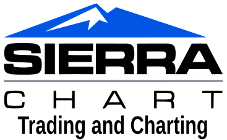Support Board
Date/Time: Mon, 27 Oct 2025 10:13:11 +0000
[Programming Help] - Chart #2 has tagged chart #1 for full recalculation
View Count: 130
| [2025-10-08 14:43:56] |
| maxpi - Posts: 193 |
|
All i do with chart #2 is sc.GetChartBaseData(2, TickPriceArray); and sc.GetChartDateTimeArray(2, TickDateTimeArray); Why should this cause a full recalc? It is making things difficult, and seemingly it was not doing this until today and seems to be intermittent actually. If there is a way i can have control over these recalcs I'd love to know how |
| [2025-10-08 16:21:06] |
| John - SC Support - Posts: 42557 |
|
To start with, why you are you using sc.GetChartBaseData() and sc.GetChartDateTimeArray() on the chart on which your study is loaded. You should be using sc.BaseData[][] and sc.BaseDateTimeIn[]. Refer to the following: ACSIL Interface Members - Variables and Arrays: sc.BaseDataIn[][] / sc.BaseData[][] ACSIL Interface Members - Variables and Arrays: sc.BaseDateTimeIn[] As to the recalc, this may not have anything to do with your study. It could be caused by another study that is referencing information from Chart #1, most likely a Study/Price Overlay. But there are others that could also do this. For the most reliable, advanced, and zero cost futures order routing, use the Teton service: Sierra Chart Teton Futures Order Routing |
| [2025-10-08 18:26:16] |
| maxpi - Posts: 193 |
|
a study on chart #1 is requesting the data from chart #2. The log says "Chart #2 has tagged Chart #1 for full recalculation". Nothing else is going on with chart #1, it has no study applied to it, no drawing. It is by way of being linked to other charts part of a replay where I choose "charts with same link number" and "calculate at every tick/trade". This recalculation serves no purpose that I can see and is a problem for the study I'm running on Chart #1
|
| [2025-10-08 19:19:59] |
| John - SC Support - Posts: 42557 |
|
The statement "Chart #2 has tagged Chart #1 for full recalculation" means that Chart #2 needs something from chart #1. You need to look at the studies on Chart #2 and determine which one is doing this. There is a purpose to it, and if your study is having an issue, then you should also look at how your study is setup, as there is no reason why this should cause an issue if you are not needing any data from Chart #1.
For the most reliable, advanced, and zero cost futures order routing, use the Teton service: Sierra Chart Teton Futures Order Routing |
| [2025-10-08 19:31:35] |
| maxpi - Posts: 193 |
|
Chart #2 has no studies applied to it, no drawings, nothing at all. It is there to serve up it's data to the study on chart #1. I really am at a loss as to what triggers these recalculations and would like to have a way to prohibit it
|
| [2025-10-09 21:03:12] |
| Sierra_Chart Engineering - Posts: 21221 |
|
One example would be when chart 2 is loaded, it will tag chart 1 for a full recalculation. There is not a way to prevent this. Sierra Chart Support - Engineering Level Your definitive source for support. Other responses are from users. Try to keep your questions brief and to the point. Be aware of support policy: https://www.sierrachart.com/index.php?l=PostingInformation.php#GeneralInformation For the most reliable, advanced, and zero cost futures order routing, use the Teton service: Sierra Chart Teton Futures Order Routing |
| [2025-10-10 15:50:18] |
| maxpi - Posts: 193 |
|
There really is no reason for the recall that you or I can see and it is making things difficult: what's wrong with this picture?
|
To post a message in this thread, you need to log in with your Sierra Chart account:
